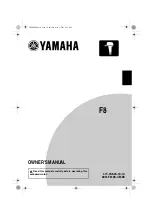
www.diamondsystems.com
Zeta User Manual Rev 1.0
Page 46
The edge detection circuit on Zeta contains an enable register, a polarity register, and a status register. The
programmer can specify which bits will be active with the enable register and which transition to detect on each
bit (0 to 1 or 1 to 0) with the polarity register. The status register indicates which bits have seen the specified
change since the last time it was read. The programmer provides custom code to define the functionality to be
performed whenever specified edges occur. When a qualifying edge occurs, the circuit will generate an interrupt
on the ISA bus. If the Diamond Universal Driver software is being used, the driver will respond to the interrupt and
pass control to the user’s custom code. After executing the application
-specific functionality, the custom code
must clear the interrupt request in order to be ready for the next event.
14.4.3
Support for Special Functions
On “A” models, port C and D bits may be defined as inputs or outputs for the 8 counter/timers as well as outputs
for the 4 PWMs, as indicated below. Configuring these features is explained in the following sections and in the
Diamond Universal Driver user manual.
DIO Bit
Alternate Signal
C0
Counter 0 I/O
C1
Counter 1 I/O
C2
Counter 2 I/O
C3
Counter 3 I/O
C4
Counter 4 I/O, PWM 0 out
C5
Counter 5 I/O, PWM 0 out
C6
Counter 6 I/O, PWM 0 out
C7
Counter 7 I/O, PWM 0 out
D1
D/A waveform external trigger
D2
A/D external trigger
14.4.4
Power Pins
The digital I/O connector J17 contains a pin capable of supplying a digital power supply voltage for user
convenience. The voltage is determined by the digital I/O logic level jumper and is either 3.3V or 5.0V. The pin is
protected by a resettable PTC (positive temperature coefficient) fuse with a 100mA maximum steady state current
rating. If the current on this pin exceeds ~100mA (typically due to a short or overcurrent condition), the fuse will
heat up and turn into a high impedance, causing the output voltage and current to drop to a trickle level, which is
just enough to maintain the fuse in the high temperature blocking mode. This blocking condition can persist
indefinitely without causing damage to the component or the board. Once the short or overcurrent condition is
removed, the fuse will cool down in approximately 1-2 seconds, and the pin will return to its normal voltage and
current capacity.
The digital I/O connector also contains a digital ground pin, which should serve as the reference and current return
paths for all digital I/O connections on J17. This pin does not have fuse protection; however its safe operating limit
is 1.0A.






































